Fuel Gauge
Raman spectroscopy is used to analyze fuel-air ratios in an engine, with a view to understanding efficiency.
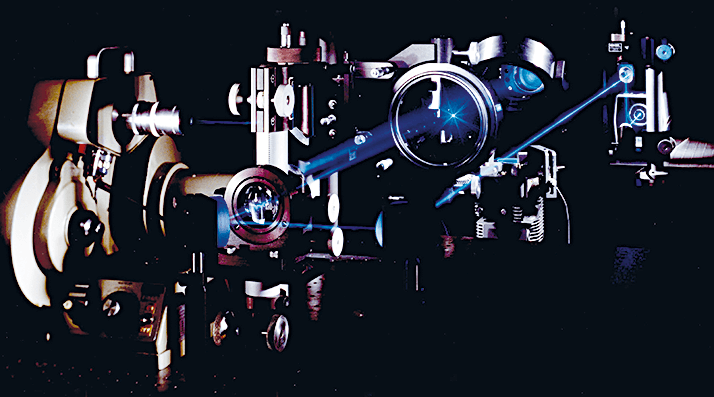
Eruptive Technology
Fei Yan (European Southern Observatory, Germany, and National Astronomical Observatories, Chinese Academy of Sciences, China) operates a UV spectrometer to observe the sulfur dioxide absorption in the plume of Mount Etna.
For more info: http://www.eso.org/~rfosbury/tmp/poster-Etna-trip-2014.pdf
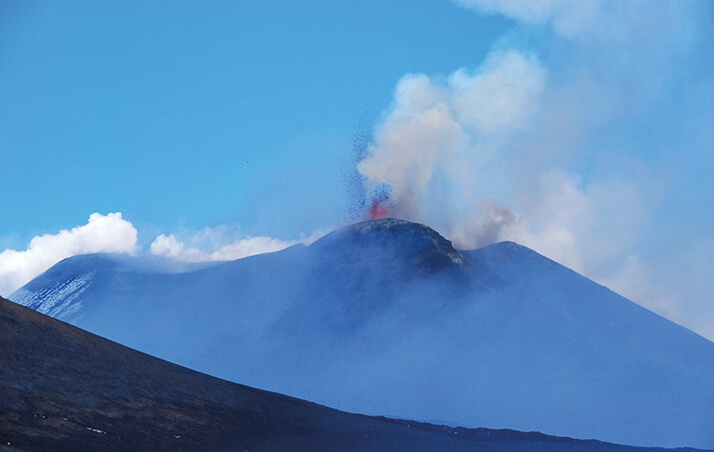
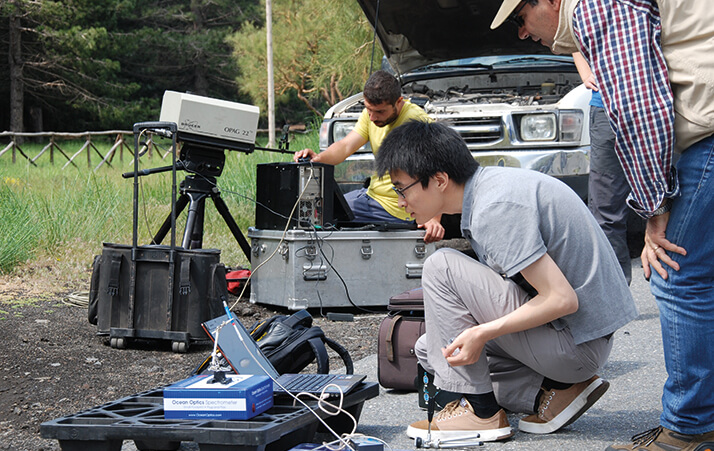
Homemade Spectroscopy
A modern-day John Browning observes the sun's spectrum at Neamt Citadel, Moldavia, Romania.
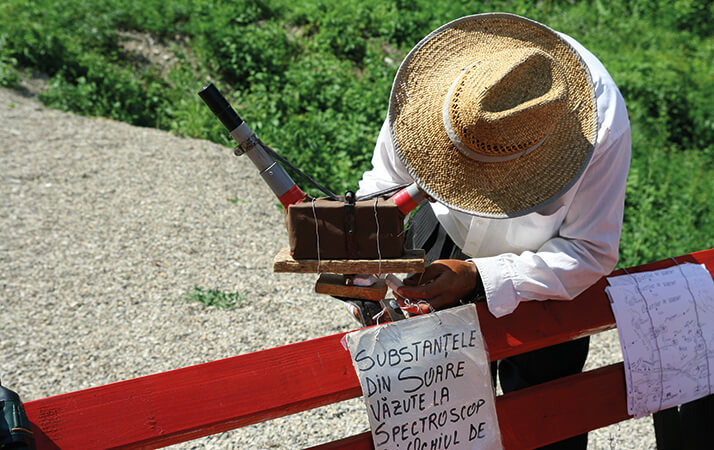
Deep Sea Firing
A naturally occurring outcrop of gas hydrate (off the coast of Northern California, in the Eel River Basin at 1623 meters depth) is examined using an in-situ laser Raman spectrometer by researchers from the Monterey Bay Aquarium Research Institute in California, USA. The laser is held and positioned by the robotic arm of the remotely operated vehicle (ROV) and the Raman signals are collected in real time via Ethernet communications with the ROV.
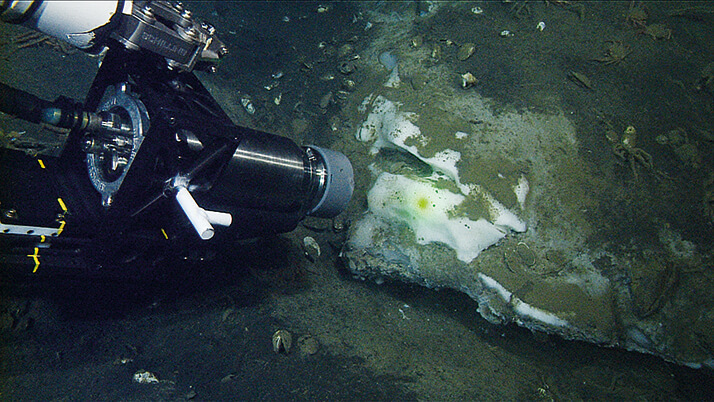
Forna Fingerprints
In Baccharis trimera, a medicinal plant native to South America, irregular monoterpenes, such as carquejol and carquejol acetate, are considered chemical markers. Studying the species in Centro de Pesquisa e Conservação da Natureza-Pro Mata in Brazil showed us that metabolism differences between the male and female specimens should be also considered.
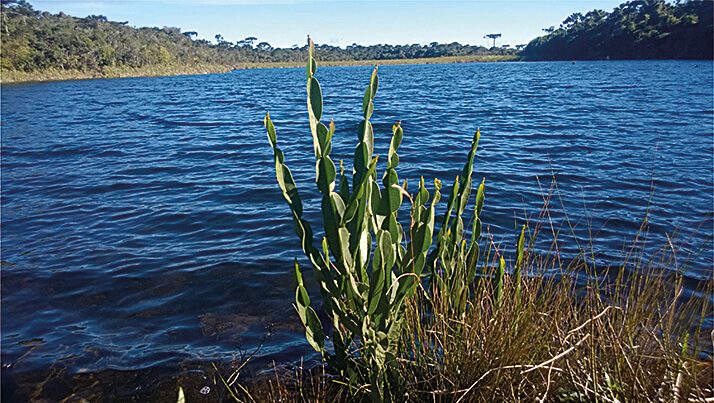
Hands on History
A finely-constructed small glass Schrotter reaction vessel (1890s) in front of the laboratory procedure for analysis of carbonic acid in limestone, from Outlines of Quantitative Analysis by A. Humboldt Sexton 1903.
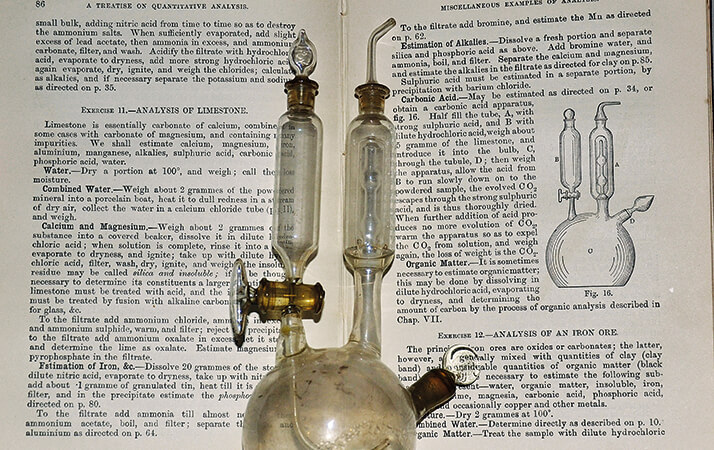
Fourier Transform Infrared Spectroscopy (FTIR) is used to probe the chemical makeup of engine exhaust gases generated in Pacific Northwest National Laboratory’s Engine Emissions Laboratory. Understanding the complex chemistry may unlock ways to reduce engine emissions and help the environment.
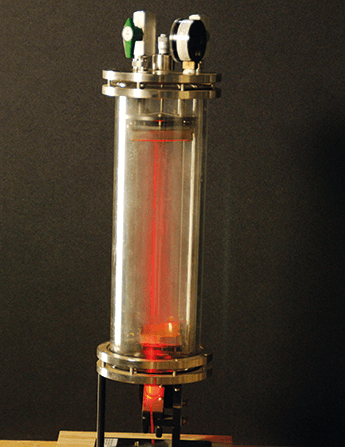
Have Lab, Will Travel
A makeshift portable field laboratory for on-site determinations of total iron in mine drainage from several sites in southwestern Pennsylvania. Mark Stauffer (University of Pittsburgh-Greensburg) performed spectrophotometric determination of iron using iron(II)-chelating agent Ferene S, a Vernier Spectro-Vis diode-array single-beam spectrophotometer, a Vernier LabQuest microprocessor, and a plastic cuvet. The best aspect of a lab-in-a-car? Staying dry and warm on a cold December day.
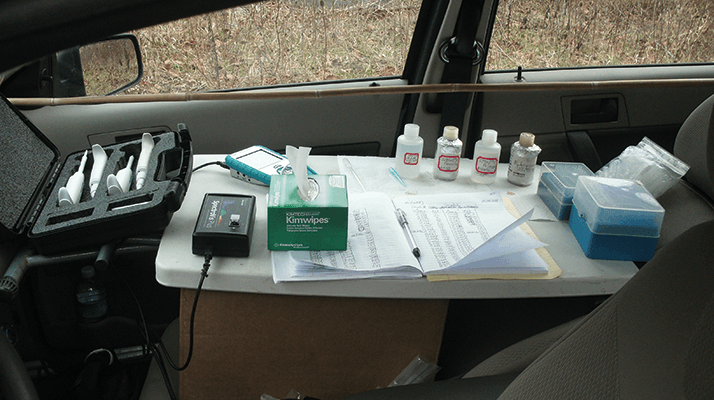
Scent of a Woman
Christine Drea, Professor of Evolutionary Anthropology at Duke University and her student Jeremy Chase Crawford (who has since moved to the University of California) collected secretions from ring-tailed lemurs for gas chromatography-mass spectrometry (GC-MS) analysis. “Chemical richness” decreased with pregnancy, more so for dams bearing male offspring. For more: tas.txp.to/0815/lemur

Click the links below for more When Art Meets Science: Where Art Meets Science In Our Bodies In Our Food Out of this World




